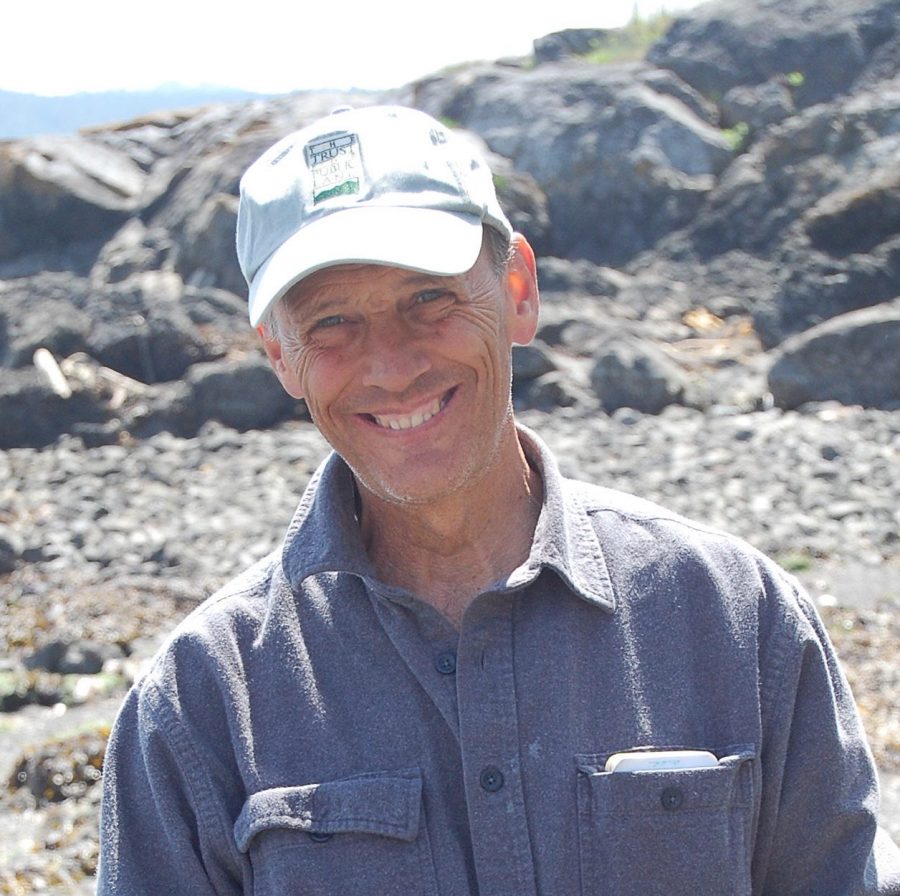Phil Green’s connection to nature makes the foundation for how he lives his life. Green is the caretaker of four islands protected by The Nature Conservancy in Washington’s San Juan Islands archipelago. Yellow Island, the eleven-acre member of the preserve he calls home, is only accessible by boat, but visitors who make the trip are greeted by a native prairie landscape, covered with wildflowers that bloom in the spring and summer. Visitors are also greeted by Green, who is happy to describe the Native Americans who once inhabited the island and the island’s natural history.
Green seems to live and breathe nature as he paddles in the waters around the island and walks its wooded trails. “If people were more connected to nature, the planet would be better off,” Green insists. Both Green’s career and life follow his advice. He practices shinrin-yoku, the Japanese practice of “forest bathing”—spending time in a natural environment––daily, and he recommends Blue Mind by Wallace J. Nichols for understanding the scientific support for the benefits of being near water.

Green calls himself an “avid wildlife watcher, but not a ‘lister.’” So while Green disagrees with the trophy-hunting culture of seeking out wildlife, he “lists” in the name of science for eBird and REEF http://www.reef.org/, a marine conservation organization that tracks surveys of marine fishes done by recreational scuba divers. He is not currently diving, so he thinks his 404 surveys for REEF were an accomplishment.
He was inspired to record bird songs in 2003 after reading Wild Soundscapes: Discovering the Voice of the Natural World by Bernie Krause, a soundscape ecologist and musician. But Green’s early recording equipment was not convenient or easy to use, so his dedication to recording faltered. But in 2016, he listened to Kraus’s TED talk and regretted not keeping up with his recording. Now, he often carries a Zoom H6 recorder, a Sennheiser ME 67 shotgun microphone, and Sennheiser headphones when he is hiking or paddling, ready to record at a moment’s notice.
A pair of Black Oystercatcher Haematopus bachmani recorded in the early morning while coffee was brewing. © Phil Green ML 38921181
Green wants to be a better birder. For now, that means focusing on improving his recording skills. He wants to submit more recordings that rate as a 4 or 5, rather than his typical, 3. His biggest challenge is background noise. Living on an island, he contends with wind and waves, and the boat and small plane traffic. So he is more selective about what days he records, staying mindful of the weather and the traffic patterns. He’s also practicing how he describes the behavior and activity of the birds he records.
When Green goes out to find a birdsong, he visualizes what he wants to record, reflecting what his mind sees and hears when blocking out the background noise. He says he is “getting used to having less than perfect [recordings].” But it seems like perfect, or at least idyllic, is within reach for Green.
A pre-dawn recording of House Wren Troglodytes aedon, on Yellow Island this past June. © Phil Green ML 62122741




